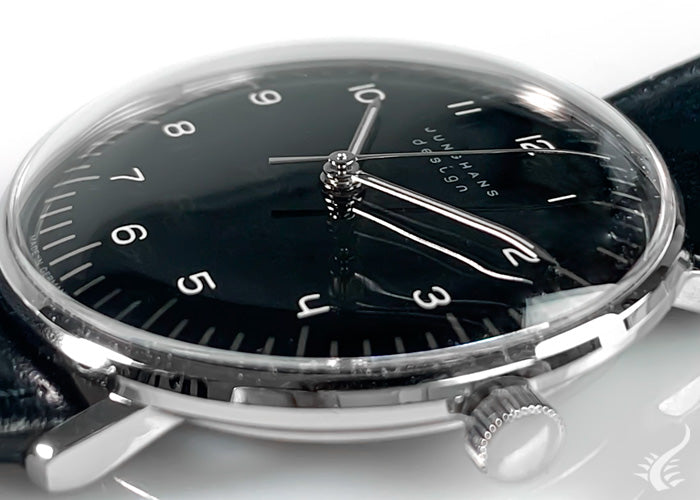Pens
Accessories
LIGHTERS
Why we measure time in 60
May 05, 2022 2 min read

Today there are watches of all kinds, with infinite complications that allow us to know exactly the date, day and time. That time, perfectly sectioned, where does it come from originally?
Who measured time for the first time?

Like all processes in the history of humankind, the measurement of time was an achievement reached through centuries of studies and inventions.
The first to develop a method of measuring time were the Egyptians, recognized pioneers among the first great human civilizations. They created the sundial, a simple but effective and incredibly revolutionary instrument. It was nothing more than a stick placed in the ground, whose shadow was used to indicate the time. Later, they perfected this clock by using a bar in the shape of a letter T, which was calibrated to divide the time between sunrise and sunset into 12 interval.
The Egyptians related most of their life events to religion, and for them the day was the time when the Sun God Ra reigned, and once he was swallowed by the goddess of the sky, Nut, he gave way to Thoth. For them these were two separate moments that were divided into 12 hours each, thus marking the 24-hour structure of today's day. Innovations began when man decided to divide the day into smaller fragments.

Citizen OF Automatic Watch, 8210
At that time the hands were used for counting, more specifically the phalanges (the division of the fingers). The total of 12 phalanges (the thumb was used for counting) and 5 fingers on the other hand, gives a result of 60.
From this count emerges that the minute is divided into 60 seconds. This system, known as Sexagesimal, has transcended millennia.
HOW WERE THE HOURS FORMED?
Although the Egyptians had managed to divide the 12 hours of the day (and night) into more sections that were constituted as hours, these were not entirely accurate, since measuring time at night was more complicated, and then with the change of seasons the length of days and nights was variable, and it was not until the Hellenistic period when astronomers decided that the length of the hours would be fixed.
Based on the sexagesimal system, a geographical system of latitude and longitude was created. The divisions were called "minutae primae" and "minutae secundae", today minute and second. However, the subdivision of 60 minutes and each minute into 60 seconds were not fully used until about the 16th century, when the first mechanical clocks appeared in Europe.

Junghans Max Bill Handaufzug Manual Watch
The sexagesimal system began to be used 5,000 years ago and is still used today as the basis for dividing hours, minutes and seconds. Tradition has always accompanied watchmaking and although new innovations and technologies emerge, they simply further entrench the sexagesimal base system that was inspired by something as simple as the fingers of a human hand.
If you require more information or if you would like to place an order, please do not hesitate to contact us or visit our store in Madrid, at Nuñez de Balboa 90.
We will be pleased to help you.
Leave a comment
Comments will be approved before showing up.
Also in News

The art of writing: a journey that never ends – Day 7 of Iguana Pen Week
November 04, 2025 2 min read
Read More
United States & Armenia: Innovation and Art in Motion – Day 6 of Iguana Pen Week
November 04, 2025 4 min read
Read More
Germany: precision and functional design in every pen – Day 5 Iguana Pen Week
November 04, 2025 3 min read
Read More
Iguana | Blog
Recent Articles
- The art of writing: a journey that never ends – Day 7 of Iguana Pen Week
- United States & Armenia: Innovation and Art in Motion – Day 6 of Iguana Pen Week
- Germany: precision and functional design in every pen – Day 5 Iguana Pen Week
- France & Switzerland: Elegance and Precision in the Art of Writing – Day 4 Iguana Pen Week 2025
- Japan: Writing as an Art – Day 3 Iguana Pen Week
- Italy: Passion and Style in Every Stroke – Day 2 Iguana Pen Week 2025
- The journey of writing begins here – Day 1 Iguana Pen Week 2025
- Esterbrook x Peanuts, a lifelong friendship
- Timex x Peanuts: the watches that stole the world’s heart
- How to keep your Pilot Capless looking like new
Subscribe
Sign up to get the latest on sales, new releases and more …
50,000+ Satisfied Customers Our expert advisors are available Monday to Saturday, online and by phone.
60+ Official Brands Official warranty, original packaging, and stamped warranty card included.
15+ Years of Experience Specialists in writing instruments, watches, and premium accessories.
100% Secure Payment Interest-free finance available and all transactions are fully encrypted.
